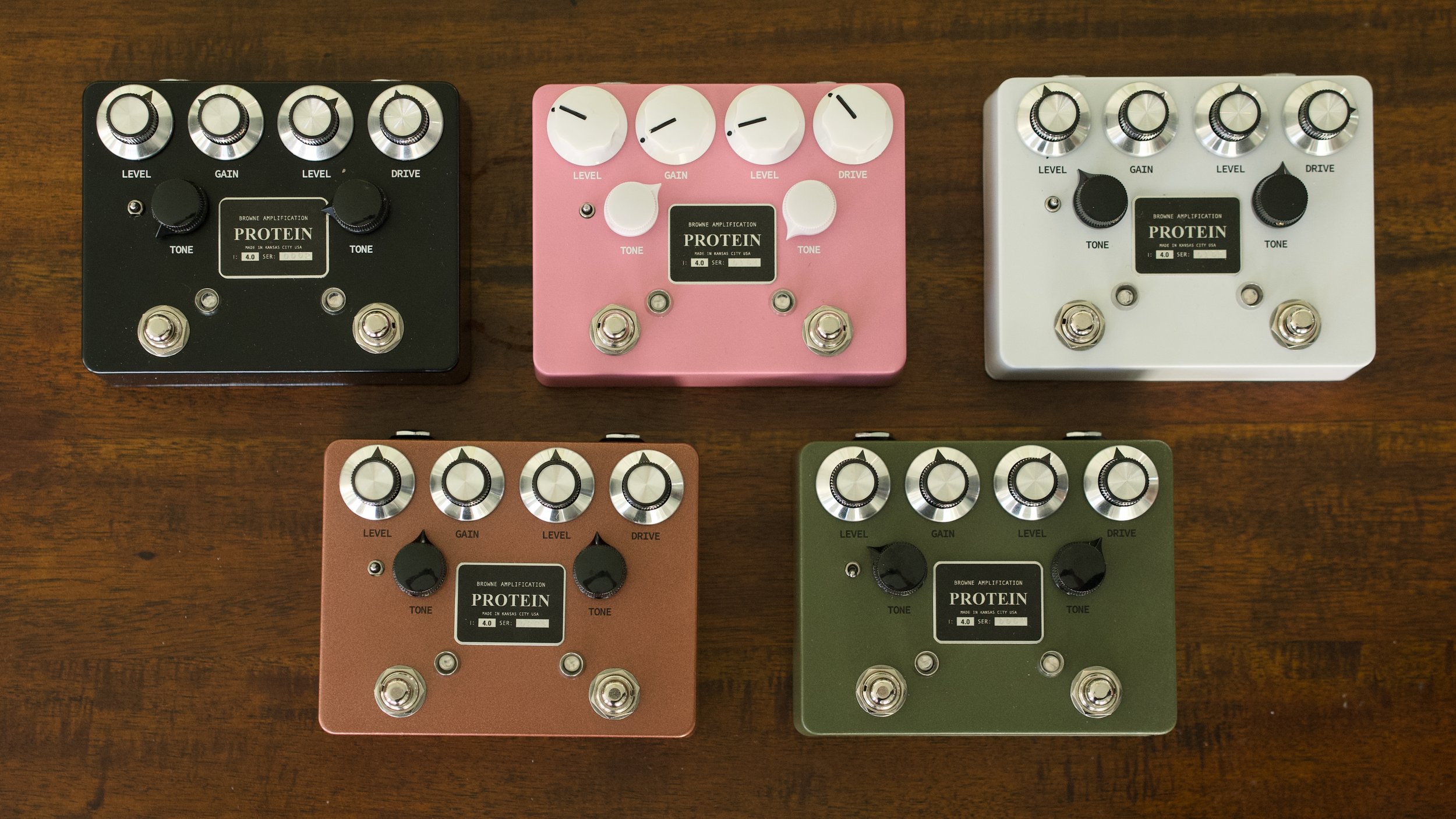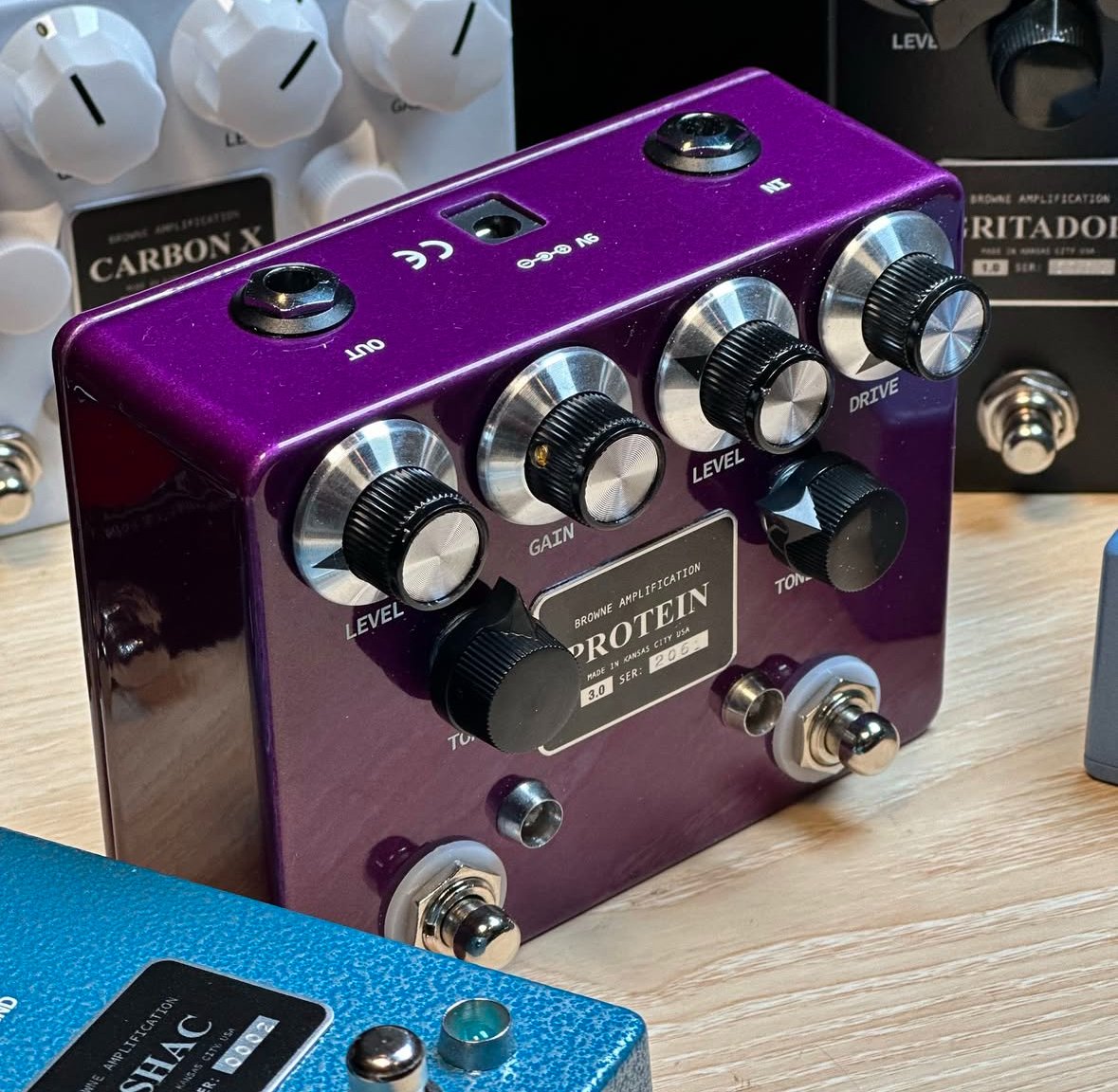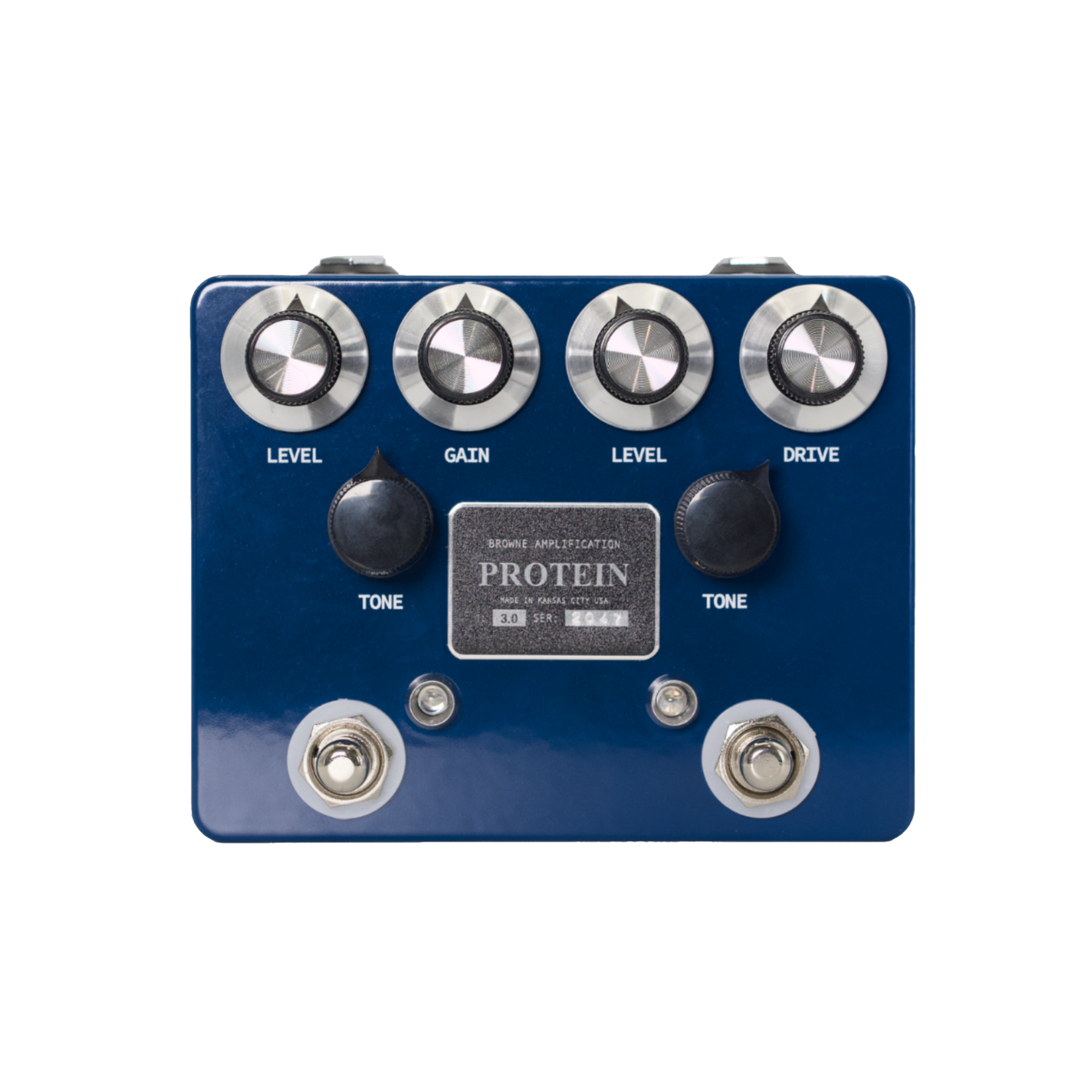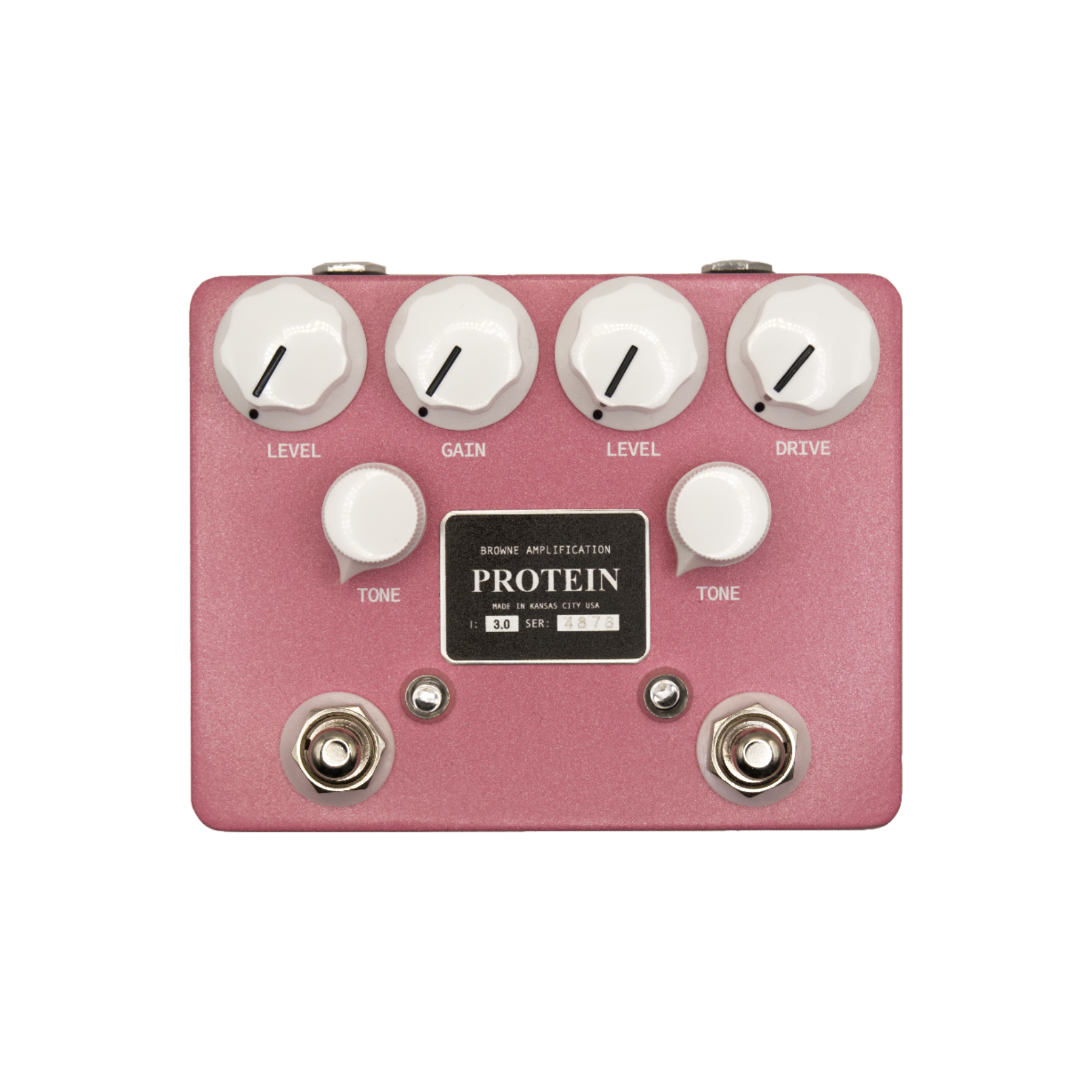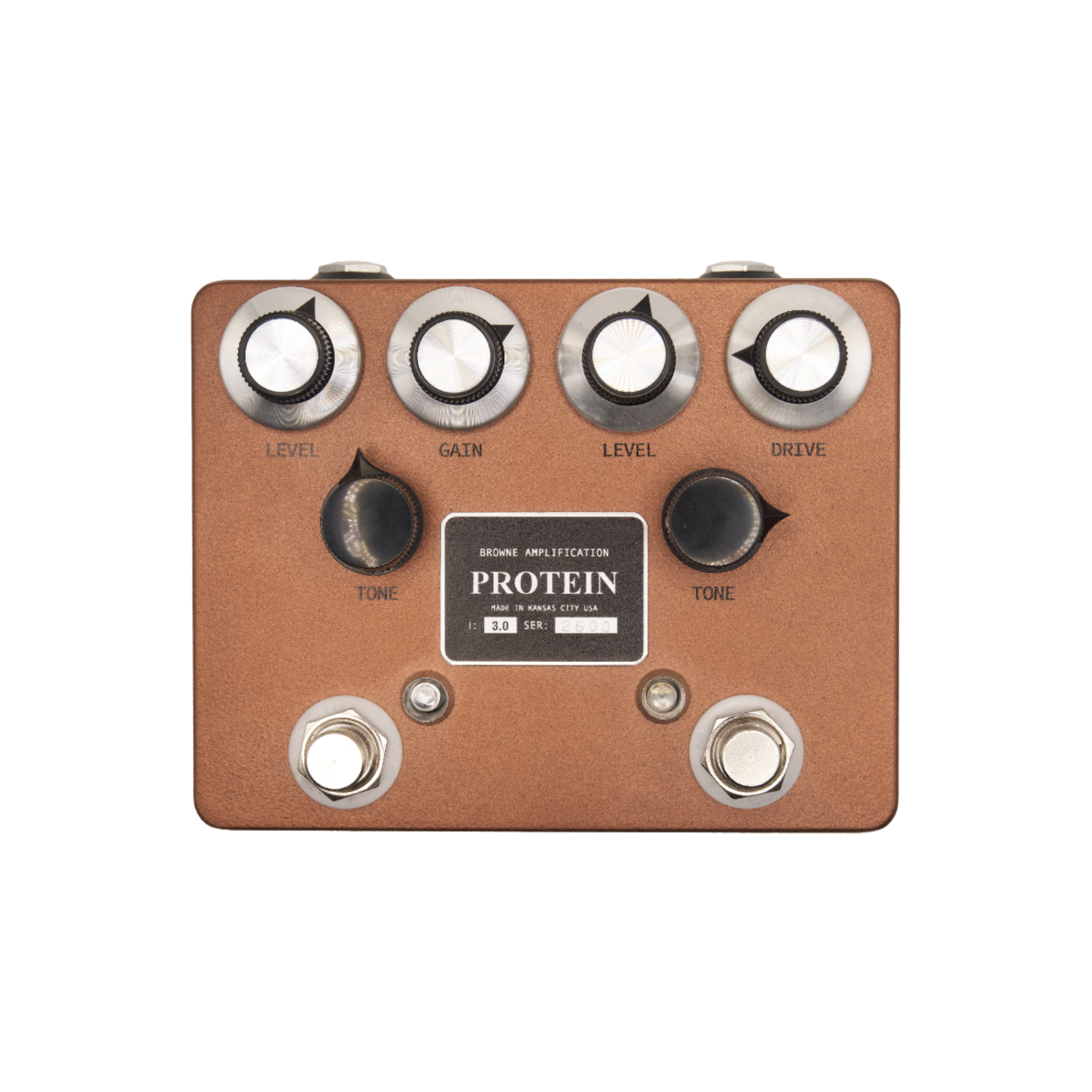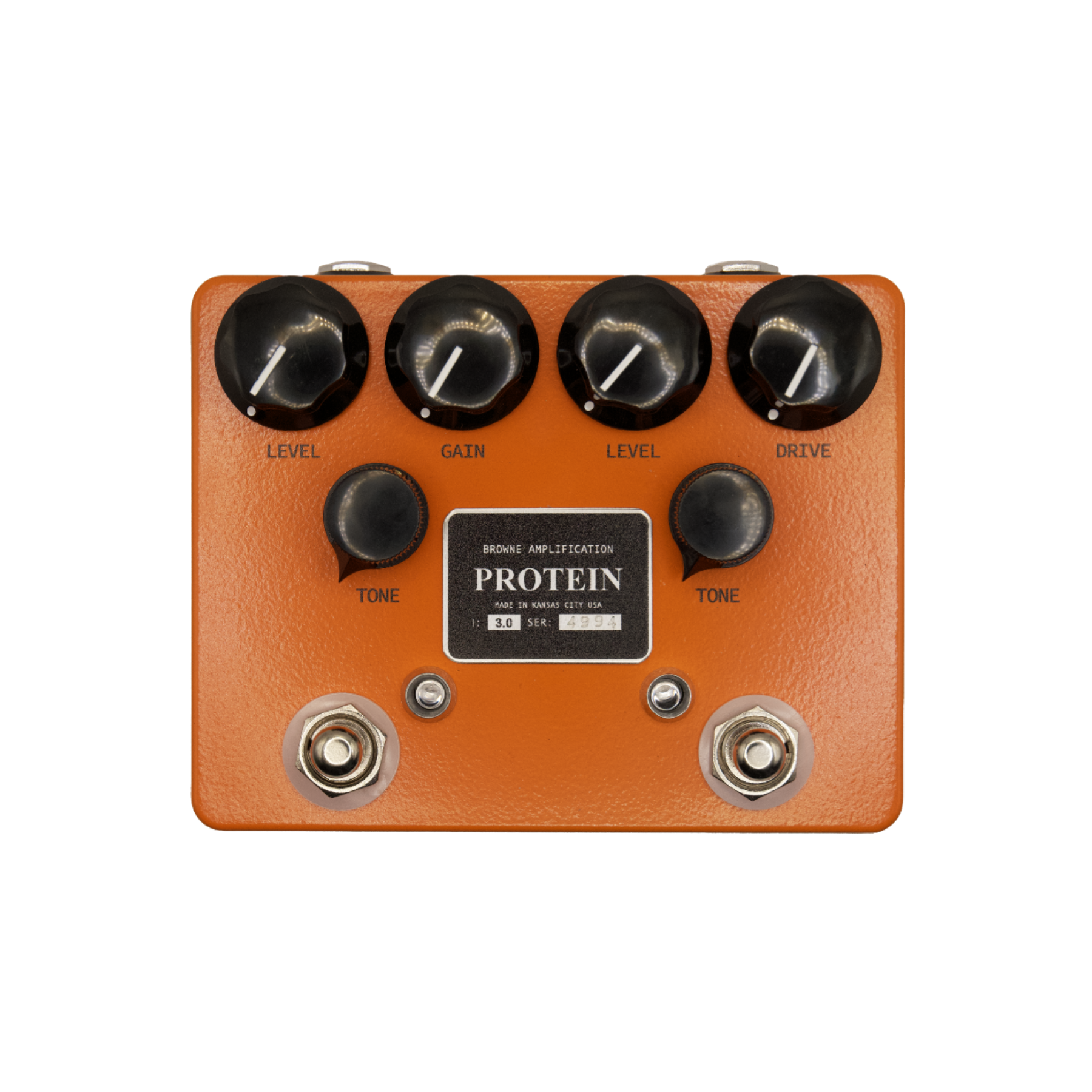THE PROTEIN
DUAL OVERDRIVE
Same soul. More control. All tone. Other overdrives wish they could stack like this.
The Protein Dual Overdrive V4 is a collaboration between David Brown and guitarist/producer Adam Sniegowski. After years on the road and in the studio using unpredictable backline amps, Adam approached Dave with a goal: create a dual overdrive that would sound great no matter what it was plugged into. They started with two drives they loved—ones that stacked well but had a few quirks—and set out to fix those issues without losing the soul of the originals.
The Blue side is based on the classic overdrive heard on records like John Mayer’s "Continuum." Dave addressed issues like limited output, revoiced the tone control, and refined the circuit to what we consider our favorite version of this beloved design—true to its roots, but undeniably improved.
The Green side is inspired by the classic “Nashville” overdrive that’s been a staple for session greats like Tim Pierce and Jerry McPherson. We reduced the gain for a more usable sweep, rebalanced the mids for a fuller presence, and tightened the low end to eliminate the woofiness. The result is a warm, punchy drive that adds low-mid "beef" without getting muddy.
But it’s the stacked mode—running the Green into the Blue—that continues to be our favorite. The third “channel” of this pedal delivers added gain and fullness while maintaining note clarity and avoiding the mushiness that plagues many stacked overdrives.
New in V4:
The Protein V4 introduces several key updates for even more versatility and tonal control:
A 3-way hi-cut toggle, taken from our Carbon V2, allows you to tailor the top end to your amp or preferences
Three internal switches on the Green side:
Low cut toggle for tightening the low end even more
A heavier clipping mode for a more aggressive breakup
An asymmetrical clipping option for added harmonic complexity and a slightly rawer edge
These additions make the Protein more adaptable than ever—whether you're chasing Nashville clarity, smooth breakup, or a harmonically rich lead tone, the V4 is built for your pedal board needs.
PLEASE VISIT OUR DEALER PAGE FOR INTERNATIONAL ORDERING
PROTEIN V3
PROTEIN V4
To use with a loop switcher like the RJM Mastermind ect.
The TRS plug on the input is going to act as the loop for the green side.
The TRS plug on the output is going to act as the loop for the blue side.
Tip is the input/send from your Loop
Ring is the output/return to your Loop.
There is a switch inside the pedal that needs to be flipped to the “split” position to use it this way. Remove the four screws from the back panel and flip the switch to the split position.
V4 - THIS PEDAL REQUIRES STANDARD 9V DC NEGATIVE POWER AND MEASURES 120mmx94mmx56mm (includes knob height) POWER DRAW <130 mA. V3 includes top mounted jacks, soft switching, and a single internal switch for loop mode, Hi-cut switch for the blue side and 3 internal optoins for hte green side.
V3 - THIS PEDAL REQUIRES STANDARD 9V DC NEGATIVE POWER AND MEASURES 120mmx94mmx56mm (includes knob height) POWER DRAW <100 mA. V3 includes top mounted jacks, soft switching, and a single internal switch for loop mode.
V2 - THIS PEDAL REQUIRES STANDARD 9V DC NEGATIVE POWER AND MEASURES 120mmx94mmx48mm (includes knob height) POWER DRAW <30 mA. V2 includes side mounted jacks, regular switches and 2 internal switches for loop mode.
PROTEIN V3 MANUAL
Looking for international shipping? Please check out our international dealers
Q and A
Q. Which side goes into which on the Protein?
A. The right side (green side) is first and cascades into the left side (blue side). The blue side has tons of headroom and also compresses really nice so it stacks really well with other drives before it. This is why I always recommend putting the protein last in your chain of drives.
Q. Is there a way to have both channels turn on simultaneously via a single switch?
A. You could put the protein pedal in a loop leave both sides on and then simultaneously turn both on/off that way.
Q. Is the blue side of the Protein a Bluesbreaker or BD-2 circuit?
A. It’s a Bluesbreaker circuit with modifications and an added output section.
Q. I have a question about the capability of the independent sides of the Protein going into separate loops. It's mentioned on the website that the RJM Mastermind works with the Protein like this. I'm curious to know if this function will work with my BOSS ES-5
A. It absolutely will!
Q. Does the green side of the pedal pair well with a Tube Screamer or does it make my beloved TS kind of redundant and replaces it?
A. Since the green side isn’t really a Tube Screamer (it’s more like a nobles ODR-1) it’s a different flavor than your TS. But I love a Tube Screamer paired with the blue side of the protein! I don’t think you’d find redundancy in having both pedals on your board.
Q. I’m finding the green side very quiet. It’s not really punching my amp until around 3pm on the volume dial. Just wondering if this is normal?
A. The green side is very dependent on the gain knob for its level - if I set it up 2/3rds up on the gain I have the level below half for unity gain - but if I run the gain low 1/3 or so I have to bring the level up to 2/3 or 3/4 for unity gain.
Q. What is the power draw of the Protein and can I use 18V?
A. About 30 mA vor the V2 and 130mA for the V3. 9VDC only please! We built it to have tons of headroom at 9V so 18V is not better.
Q. What is the difference between the V2 and the V3?
A. Besides the obvious top mounted jacks vs side mounted jacks, the V3 utilizes soft switching instead of mechanical switching, and there is a single internal switch for split mode. While we worked hard to ensure that the V2 and V3 sound the same, tolerances in parts can at times create minor variations in the “sound” of the pedal.
Q. What is in the V4?
A. The V4 has the addition of a hi-cut switch on the blue side, as well as 3 internal dip-switches for the Green side - Bass Cut, Asymmetrical Clipping and More Gain.

